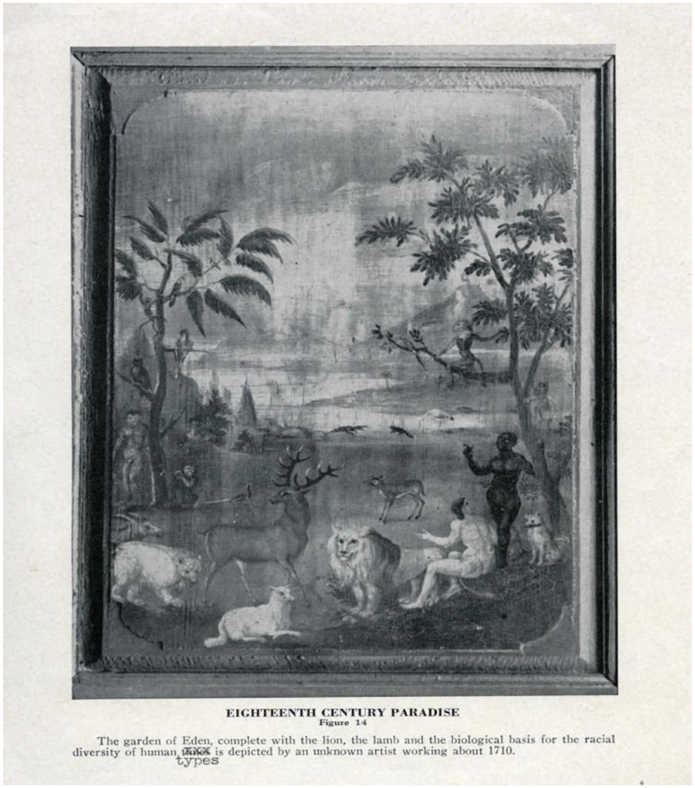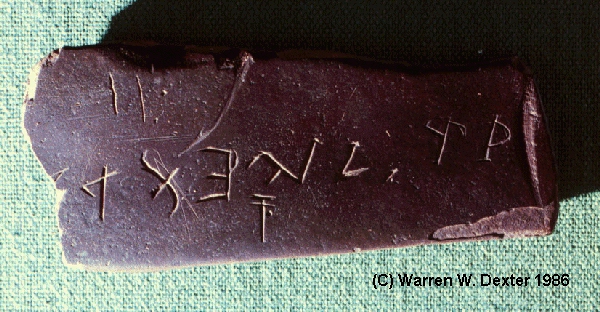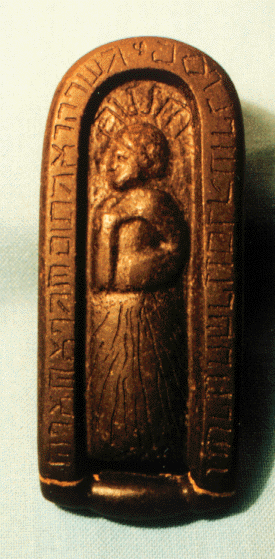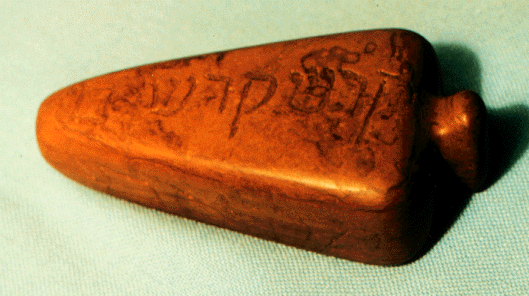You are using an out of date browser. It may not display this or other websites correctly.
You should upgrade or use an alternative browser.
You should upgrade or use an alternative browser.
Kyrie Irving Going The Kanye Route, Tweets About Book Of Hebrews, Will Donate $500k To Organization
- Thread starter BK The Great
- Start date
More options
Who Replied?Voice of Reason
Veteran
That people's own tradition, from the article you quoted, is "According to their oral tradition, the Lemba are descended from seven Jewish men who left Israel 2,500 years ago and married African women." So they don't believe that black people are the "real jews", they believe that they're the result of interbreeding between Black people and Jews.
And the genetic studies you quote confirmed that - they compared their DNA to Ashkenazi and Sephardi Jews and found some ancient male (but not female) descent from the same population, and that hasn't been found in any non-Jewish population. So they literally have some male Jewish DNA that other Jews have but not other Black folk.
The notion of Jewish DNA is a farce these people are Germans
Voice of Reason
Veteran
Coli is not a black site breh
Most of them are foreign blacks
Voice of Reason
Veteran
The CEO of Smart Dumb N*gga Inc. strikes again.
KD going to look back on hitching a ride with Kyrie as his worst career decision ever.
Do you think Jesus is white?
Voice of Reason
Veteran

Frontiers | Genetic markers cannot determine Jewish descent
Social interaction is a basic property of human Darwinian evolution. Presumably inherent differential physical as well as behavioural properties have always ...
Genetic markers cannot determine Jewish descent
 Raphael Falk*
Raphael Falk*- Department of Genetics, Program for History and Philosophy of Science, The Hebrew University of Jerusalem, Jerusalem, Israel

Bat creek stone, found in Tennessee with Paleo-Hebrew writing...a language the northern dispersed tribes would have known well
The Bat Creek Stone was shown to be a 19th-century forgery, copied directly from a Hebrew inscription in "General History, Cyclopedia, and Dictionary of Freemasonry" except with two miswritten letters which make the inscription nonsense.


Imagine the likelihood that some random stone written by ancient American Hebrews happens to match the exact same inscription found in one of the most widely available Masonic writings of the time....except that it looks written by someone who didn't even understand Hebrew.

Los Lunes, New Mexico....more Paleo Hebrew writings found in the Americas
The Los Lunas Decalogue Stone is considered a likely forgery as well, because its Hebrew is closer to modern Hebrew than ancient, is full of puncuation mistakes and fused letters from different time periods and languages, because there are several major copying errors that would only be made by someone who didn't understand the words they were trying to copy, and because it was discovered in a place completely devoid of any associated signs of an ancient civilization that could have written it.
The Decalogue and Keystone found in the 1800s in Ohio...


This is the most obvious forgery of the whole bunch, considering that it's been known to be a forgery since 1860 when it was discovered.

The first stone, the "keystone", was discovered in June 1860 and was immediately exposed as an obvious forgery because it was written in modern Hebrew and full of obvious mistakes. Abraham Geiger of the New York Times wrote in JULY 1860 that that shyt was obviously fake, the "the bungling work of an unskilled stone mason and the strangeness of some letters as well as the many mistakes and transpositions was his fault. The letters are not antique. This is not a relic of hoary antiquity".
So just three months after their first find was exposed as a fake, the same people found a SECOND stone, the "Decalogue", in the same exact place but this time written in ancient Hebrew, form but still with modern Hebrew alphabet, as if they had taken into account why their original find was discredited so quick and tried harder lol. It was also found to closely match an image in Discoveries in the Ruins of Nineveh and Babylon, a popular archeology book of the time.
So in conclusion we have 3 different examples of "Hebrew" writing, made in 3 different versions of the script, in three completely different parts of the country, all of which are full of errors and unassociated with any matching cultural finds.
What's more likely to you - that there was some giant Hebrew culture that ranged across the USA, somehow incorporated modern changes to Hebrew script and happened to match stuff published in pop Hebrew books of their time of discovery, but only left 3 perfect-looking traces spread across the country and not a single other fragment or evidence? Or that the late 1800s and early 1900s were famous for archeological frauds and forgeries and three amateur attempts popped up around that time?
Typical anti black self hatred.
People want to claim everything but blackness
People want to claim everything but blackness
gtj1982
Superstar
Ancient Hebrews being black is far less of a fairytale than to think they look like modern European Jews and the same exact thing in regards to Ancient Egyptians, they may not be the direct lineage of black Americans and other Africans in the diaspora but to act as if the same peoples who lived amongst Black African Egyptians and couldn’t be told apart(Moses) aren’t what we would consider ‘Black’ in modern terms is illogical IMO.
The words Semetic literally denote their history, they are are an Afroasiatic group just like the Somalis Ethiopians and other East African/Arabian groups.
I don’t think anyone has said that no Jewish people were black or that there aren’t any black Jewish descendants alive today. The push back arises when the claims start to push that the slaves are the lost tribe of Israel and black Americans are the real Hebrews.
Personally I’m not into to religion and think it occupies too much time and thoughts but that isn’t even my biggest issues with the whole theory.
My thing is it ignores/erases/denies our west African histories/cultures/beliefs. All the “we are really this” theories come across as an attempt to disassociate with a history of slavery. Plus it does nothing to help you today. Will you start going to the synagogue or will be appointed the head of Disney. Jews have power because they are rich and white.
Just my thoughts on it I don’t hate on anyone and how they feel about it. Hard convo to have over the internet. Whole thing just reminds of white people claiming to be descendants of king such and such or Vikings. And I’m like even if were true are you going to be next in line to the throne. Maybe it’s just the product of the stagnation of our culture (black white or whoever) and dedication to money and people just looking to have some actual meaning to their lives outside of working just to live.
Aight I’ve rambled long enough lol.
Voice of Reason
Veteran
Blacks might not be the real Jews but White folks sure as hell aren’t either
Kyrie got that book on 125th from them dudes right there on the corner across the from the sneaker spot
They sell incense right there on Adam Clayton I been tellin ya'll that in here for months now
They sell incense right there on Adam Clayton I been tellin ya'll that in here for months now

What’s retarded about it?His public opinion is retarded. Sure, have a public opinion, but when people see said public opinion and publicly call you a fukking moron, it is what it is

Frontiers | Genetic markers cannot determine Jewish descent
Social interaction is a basic property of human Darwinian evolution. Presumably inherent differential physical as well as behavioural properties have always ...www.frontiersin.org
Genetic markers cannot determine Jewish descent
Raphael Falk*
Humans differentiate, classify, and discriminate: social interaction is a basic property of human Darwinian evolution. Presumably inherent differential physical as well as behavioral properties have always been criteria for identifying friend or foe. Yet, biological determinism is a relatively modern term, and scientific racism is, oddly enough, largely a consequence or a product of the Age of Enlightenment and the establishment of the notion of human equality. In recent decades ever-increasing efforts and ingenuity were invested in identifying Biblical Israelite genotypic common denominators by analysing an assortment of phenotypes, like facial patterns, blood types, diseases, DNA-sequences, and more. It becomes overwhelmingly clear that although Jews maintained detectable vertical genetic continuity along generations of socio-religious-cultural relationship, also intensive horizontal genetic relations were maintained both between Jewish communities and with the gentile surrounding. Thus, in spite of considerable consanguinity, there is no Jewish genotype to identify.
- Department of Genetics, Program for History and Philosophy of Science, The Hebrew University of Jerusalem, Jerusalem, Israel
I'm not sure what relation you think that essay has to my statement. He's saying that racial genetic determinitism doesn't exist, which is true. There is no single marker to tell "that person is a Jew", just like there's no single marker to tell "That person is black" or any other particular race. Human populations fall along lines that don't perfectly match any of our social categories.
However, that doesn't mean that you can't figure out relations between peoples. Your own quote says, "Jews maintained detectable vertical genetic continuity along generations of socio-religious-cultural relationship. And reading into other work and studies, it's quite clear that "Jewish" populations across the world share some related Middle Eastern ancestry, though all of them are also mixed into their local population.
Genetic studies of Jews - Wikipedia
The notion of Jewish DNA is a farce these people are Germans
Not sure where you get that idea at all - the DNA of Ashkenazi Jews, the main ones who populated central Europe, is a mix of Middle Eastern and southern European (especially Italian) origins.
Black Man is the Original Man and the Father of Civilization..Blacks might not be the real Jews but White folks sure as hell aren’t either
Period...
But Kyrie is still a clown though
